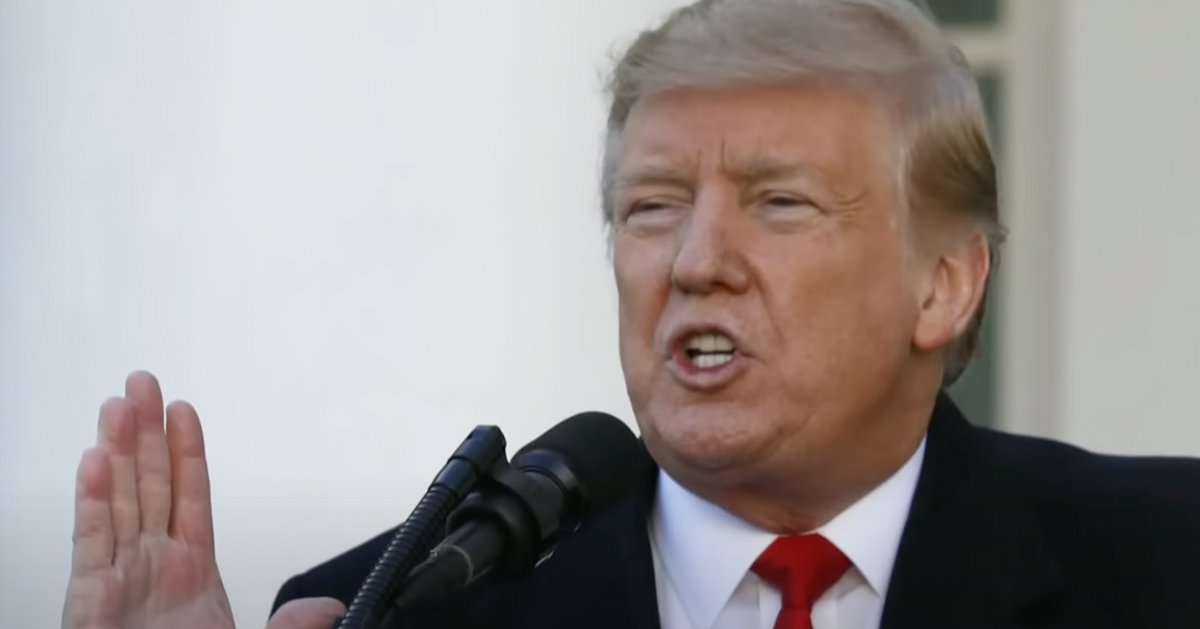Federal building cafeteria remains shut for years, sparking efficiency debate
The once-bustling cafeteria of a major federal department has remained shuttered for years, a topic that has come to the forefront amid a heated debate over the efficiency and dynamics of remote work under different presidential administrations.
Amid the lingering closure of the Department of Interior's (DOI) dining area, criticism of the Biden administration's work-from-home policy has erupted, fueled by a contrasting push from former President Donald Trump to re-establish in-person attendance among federal employees, as Fox News reports.
The DOI cafeteria has been closed since the onset of the coronavirus pandemic. Like most facilities, it shut its doors initially to curb the spread of the virus.
However, unlike many places that reopened, the cafeteria remains empty and inactive as of Feb. 20, due to the remote work policies implemented by the Biden administration.
Shift Seen in Federal Workforce Policies
The policy of not mandating in-person work persistently influenced the operations within DOI and beyond for years following the pandemic. As a result, the office spaces became desolate, a point that did not escape the attention of figures advocating for more traditional work arrangements.
By January, former President Trump voiced dissent against these remote work policies. He demanded a full return of federal employees to their workplaces by early February, threatening termination for non-compliance.
His administration took significant steps to ensure this transition back to physical office environments.
Interior Secretary Doug Burgum has been an active participant in implementing Trump's directive. Reaffirming the necessity of active government functioning, Burgum has mandated the return of federal workers to their offices. This insistence aligns with broader reviews undertaken by the Trump administration over recent months.
Cafeteria Closure Sparks Broader Debate
Critics have pointed out that the continued closure of the cafeteria symbolizes a wider issue within government operations. "Having federal employees protest workplace reforms on a holiday while regularly avoiding office attendance is irrational," a source remarked, emphasizing disparities in accountability.
The situation has fueled discussions about the mindset and responsibilities of government workers. Discussions of government downsizing and workforce management have been punctuated by contrasting strategies from consecutive presidential administrations.
To instigate this shift, the U.S. Office of Personnel Management initiated offers in January to over two million federal employees. These offers included buyouts, designed to incentivize either resignation or a return to in-person labor. This strategy became part of a larger effort to recalibrate government operations by minimizing expenditures and downsizing.
Employee Buyouts and Resignations
As a result of the policy changes, approximately 75,000 federal employees accepted a deferred resignation program. This program provided an option to retain pay and benefits while exempting employees from attending the office until September 30, 2025. It underscores a transitional approach to workforce management under the modified guidelines.
In tandem with these financial strategies, reports of reduced utilization of facilities such as the Housing and Urban Development (HUD) headquarters have emerged. Fox News Digital described the HUD headquarters as an underused space.
As debates continue about federal workforce effectiveness and government expenditure, questions about federal operational productivity linger. Should such large facilities like departmental cafeterias and offices remain inactive, critics argue it represents inefficiencies at the taxpayer’s expense.
Reactions from Across Political Spectrum
"The pandemic justified initial closures, but the lingering impacts of the Biden administration’s policies prompted confusion," a source with insight into the situation noted. They questioned the rationale behind prolonged remote work policies when returning to a traditional workforce could contribute more effectively to national objectives.
Burgum highlighted that America's path toward self-reliance, particularly concerning energy, requires a robust in-person workforce. His statements emphasized that President Trump was fulfilling promises aimed at fostering a high-functioning government workforce.
Much debate surrounds whether the remote work flexibility championed during the Biden years remains sustainable or whether Trump's advocacy for in-person work realizes greater efficiency. For now, the cafeteria at the DOI stands as a quiet testament to this ongoing debate within federal operations.
As federal policies evolve, the direction of workplace norms remains a point of contention, influencing not only the operation of cafeterias but broader governmental strategies. This story exemplifies how the dynamics of work culture continue to shape public sector practices and subsequent political discourse.




